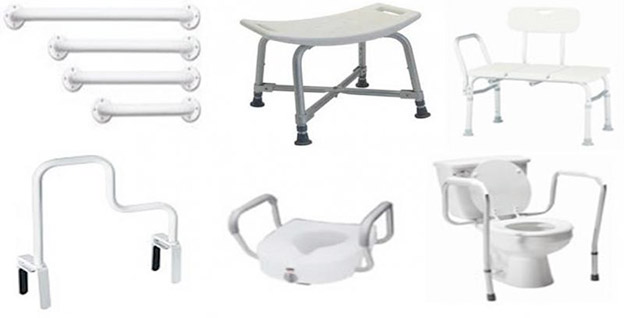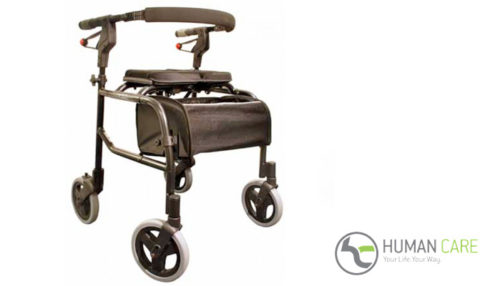The Management of Lymphedema
Lymphedema is a painful condition that is incurable, but can be controlled with the right treatment. Are you suffering from lymphedema? This blog will look at what lymphedema is as well as how to treat it! Keep reading to learn more.
What is Lymphedema?
Lymphedema is a condition where excess fluid collects in the tissue which leads to swelling. The lymphatic system is vital for immune function and has a fluid called lymph which circulates throughout it. When there is a blockage in this system, the result is typically lymphedema. Lymphedema can affect individual arms, legs, or both.
Primary Lymphedema vs Secondary Lymphedema
There are two types of Lymphedema, Primary and Secondary. Keep reading to learn more about each.
Primary Lymphedema
Primary lymphedema is the result of a flaw in the structure of the lymphatic system. On some occasions it is that too few lymph vessels are present, in others it is that the vessels are simply too narrow. The link between these is that the lymph transport is not working properly which means not enough lymph fluid is being carried away. This type of lymphedema can present at birth (congenital) or can present sporadically later on in life.
Secondary Lymphedema
Secondary lymphedema is caused by an injury to a healthy and functional lymphatic system. Some of the ways this can occur include:
- Bruising
- Surgical interventions and irradiations
- Bacterial, viral, or fungal infections
- Inflammation
- Filariasis
It is important to note that in the western hemisphere, the most frequent cause of secondary lymphedema is the treatment of malignant tumours. This is because cancer cells tend to migrate through the lymph vessels and then metastase on the closest lymph node. This means that the doctors need to remove the tumour and the affected lymph node.
Stages of Lymphedema
Since lymphedema may not develop rapidly, there are several different stages of lymphedema. Unfortunately, once the lymphedema begins, the progression of lymphedema is inevitable. Without treatment, the lymphedema can begin to resemble chronic inflammation. This inflammation may not be recognizable from the outside, but it can result in weakened defence functions which can lead to bacterial infections.
There are several stages of lymphedema, including:
Stage Zero
Stage one, also known as latency stage, is the stage where the lymphatic system has been damaged but it can still transport the lymph load. As the transport capacity begins to decrease, oedema will begin to appear
Stage One
Stage two, also known as the reversible stage, is when the lymphatic system is exposed to an overload. This results in swelling that is still soft, but it may be possible to press indentations into the area. Elevating the affected area can help.
Stage Two
Stage two, also known as the spontaneous irreversible stage, is when the individual has excessive connective tissue. This means that when you press on the skin with your finger an indent will not occur. Elevating the affected area will not help reduce the swelling.
Stage Three
Stage three, also known as elephantiasis, can be identified by extreme swelling, indurated skin, wart-like proliferations, and occasionally large mounds begin to form.
Diagnosis of Lymphedema
Most cases of lymphedema can be diagnosed with a medical history and a physical examination. The physician will assess the area for the colour of the skin, the swelling, and the consistency of the tissue. If a clinical examination fails to provide a diagnosis, other examination methods may include lymph scintigraphy, light reflection rheography, duplex sonography, and, if a malignant form of lymphoedema is suspected (suspected cancerous disease), computed tomography or magnetic resonance tomography.
The Treatment of Lymphedema: Compression Therapy
There are different treatments for Lymphedema, but the most common is compression therapy. These garments or wraps put pressure on the tissue which helps reduce swelling and improve circulation. Many compression therapy garments are more elastic than bandage in quality because it makes them more comfortable and makes it easier for the user to pull them over their joints.
Compression Garments & Wraps
Compression garments & compression wraps are available in different compression classes that differ in pressure as well as different styles, including stockings, pantyhose, gloves, arm sleeves, and more. This makes it easier for the specific user to use them.
Compression garments help the user with several different things. Some of these include:
- Displacing the fluid from the interstitial space to help reduce the venous pooling
- Increasing the flow rate of the blood in the veins
- Remedying existing valvular insufficiency by narrowing the veins diameter
- Reducing the lymph lode
- Increasing the generation of lymph
- Increasing the capacity of the lymph transport
In order to benefit from compression garments it is important that they are custom fitted. This will help to ensure that they garments are doing what they were designed to do. Garments must also be replaced periodically for hygiene reasons. A member of ADAPT Home Health Care’s expert team will be able to provide you with more information!
Why choose ADAPT Home Health Care?
Are you wondering why you should choose ADAPT Home Health Care for your Lymphedema garment needs? There are only 3 Lymphedema Specialists in the GTA, two of which work for ADAPT Home Health Care! Our MES, Kiran Heer, from our Truscott location is Lymphedema Certified. She has also received her Government Fitters Application. We also have our Medical Equipment & Lymphedema Specialist Maria Wood available at our Truscott location. Whether you’re located in Brampton, Vaughan, Caledon, Halton Hills, or anywhere else in the Greater Toronto Area, ADAPT Home Health Care has the specialists you need to improve your daily life!
Our Certified Lymphedema Specialists
Our Certified Lymphedema Specialists are available to help you. When you visit one of our locations, our team will:
- Assess your needs
- Assist in selecting an appropriate garment
- Educate you on wearing the garment correctly
- Assist in accessing funding through both private insurance plans as well as government funding
If you require a lymphedema garment, make ADAPT Home Health Care your first stop for the perfect fit! We offer a wide range of compression wraps, custom compression garments, as well as compression stockings to help reduce swollen limbs and help return fluid back into circulation.
Our ADAPT Home Health Care Locations
Our Truscott location, in Mississauga, specializes in Lymphedema, Hospital beds, Rollators, Compression Socks, Bracing, Custom Bracing, Bathroom Safety. Our other Mississauga location, Woodland, specializes solely in compression socks. Our Gore location, in Brampton, specializes in Lymphedema, Hospital beds, Rollators, Compression SocksBracing, Custom Bracing, as well as in Bathroom Safety.
- Adapting the Workplace for People with Disabilities - December 2, 2020
- More About Rollators and The NeXus 3 - March 26, 2020
- Bathroom Safety 101 - March 12, 2020

 905-822-1614
905-822-1614



